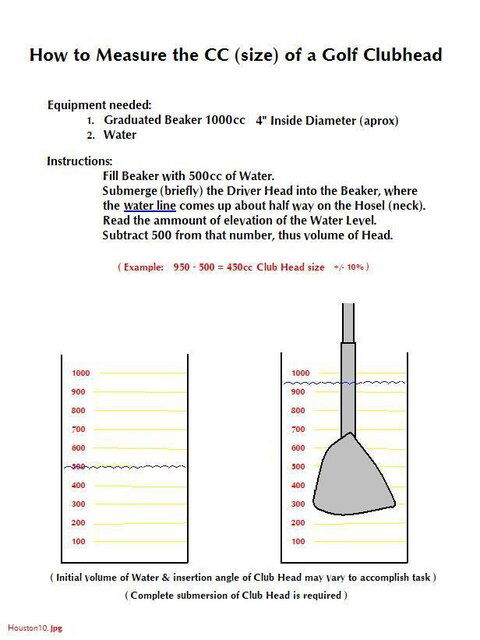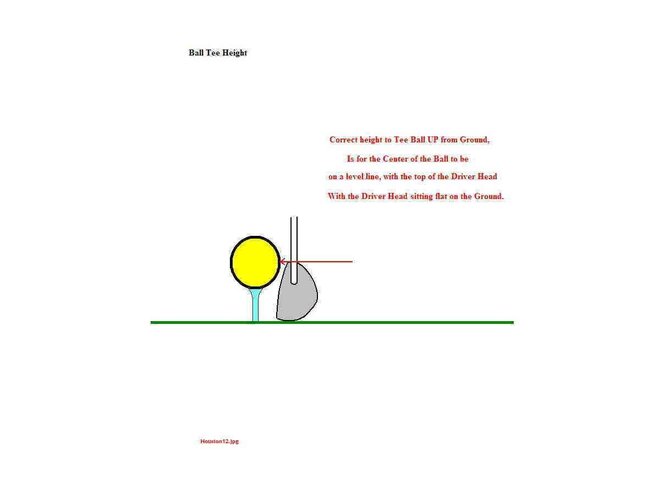Here's a little history about it !
Many years ago in Scotland, a new game was invented. It was ruled for "Gentlemen Only…Ladies Forbidden", hence the word G O L F, entered into the English Language.
How I got started:
Well over 50 years ago, my Father took me out to a local Golf Course, where I played (sorta) one Round of Golf. From that point to just a few years ago, was the only game I had ever played.
When I retired, a friend of mine urged me to play, I didn't have any Clubs, or any other of the accoutrements, which are needed.
Being retired has presented me with LARGE difference in discretionary funds, but, I didn't want to become a "complete" couch potato, and deiced if I were to drop by a Pawn Shop, I just might be able to acquire enough equipment, to at least get started, for a price better aligned to my current budget.
Over the course of a few days, I visited a few Pawn Shops, and purchased three Bags of Clubs, no individual bag containing a full set of Clubs, but the sum of all three bags, provided me with a complete set plus extras, for just under $80 total.
I got four #1 Drivers, a #3, 5, 7 & 9 Woods, #1 to #9 Irons, and five Wedges from 43° to 68°, three Bags, one which is very nice, and more than fifty new and used Balls, which were in the Bags, plus several extra clubs (for a total of 42 Clubs, several which have Graphite Shafts), Gloves, 3 Putters, and other minor stuff that's related.
Some of the Brand Names of the Clubs I purchased in the Bags, include Titlest, Ping, Mizuno, Niklaus, Northwestern and Dunlop. Though I don't have a "matched" set, I think I really found some good deals. I even have a "Stiletto" brand 320cc Driver which has 4° Loft. I admit I haven't found too many places to use it, but, I got it "if" I need a flat (low trajectory) Driver like that.
What absolutely astonished me was, that when I did a "cost of new" MSRP of what I did have, that sum added up to over $3500! I'm NOT saying that's what my clubs are worth, but WOW! I never realized that Golf Equipment could be SO expensive!
Since my original purchases, I've visited some Golf stores, and seen sets of Irons
(#3-PW) that cost almost $1000, and Drivers in the range of $600 each!
If I divide just the quantity of clubs into the original cost, finding that it runs just under $2 a club, somehow them not being "matched", seems not to be so important at that price!
So if you're looking for "something" to just try/play around with, take it from me,
visit your local Pawn Shops, some GREAT deals are available!
Many years ago in Scotland, a new game was invented. It was ruled for "Gentlemen Only…Ladies Forbidden", hence the word G O L F, entered into the English Language.
How I got started:
Well over 50 years ago, my Father took me out to a local Golf Course, where I played (sorta) one Round of Golf. From that point to just a few years ago, was the only game I had ever played.
When I retired, a friend of mine urged me to play, I didn't have any Clubs, or any other of the accoutrements, which are needed.
Being retired has presented me with LARGE difference in discretionary funds, but, I didn't want to become a "complete" couch potato, and deiced if I were to drop by a Pawn Shop, I just might be able to acquire enough equipment, to at least get started, for a price better aligned to my current budget.
Over the course of a few days, I visited a few Pawn Shops, and purchased three Bags of Clubs, no individual bag containing a full set of Clubs, but the sum of all three bags, provided me with a complete set plus extras, for just under $80 total.
I got four #1 Drivers, a #3, 5, 7 & 9 Woods, #1 to #9 Irons, and five Wedges from 43° to 68°, three Bags, one which is very nice, and more than fifty new and used Balls, which were in the Bags, plus several extra clubs (for a total of 42 Clubs, several which have Graphite Shafts), Gloves, 3 Putters, and other minor stuff that's related.
Some of the Brand Names of the Clubs I purchased in the Bags, include Titlest, Ping, Mizuno, Niklaus, Northwestern and Dunlop. Though I don't have a "matched" set, I think I really found some good deals. I even have a "Stiletto" brand 320cc Driver which has 4° Loft. I admit I haven't found too many places to use it, but, I got it "if" I need a flat (low trajectory) Driver like that.
What absolutely astonished me was, that when I did a "cost of new" MSRP of what I did have, that sum added up to over $3500! I'm NOT saying that's what my clubs are worth, but WOW! I never realized that Golf Equipment could be SO expensive!
Since my original purchases, I've visited some Golf stores, and seen sets of Irons
(#3-PW) that cost almost $1000, and Drivers in the range of $600 each!
If I divide just the quantity of clubs into the original cost, finding that it runs just under $2 a club, somehow them not being "matched", seems not to be so important at that price!
So if you're looking for "something" to just try/play around with, take it from me,
visit your local Pawn Shops, some GREAT deals are available!




